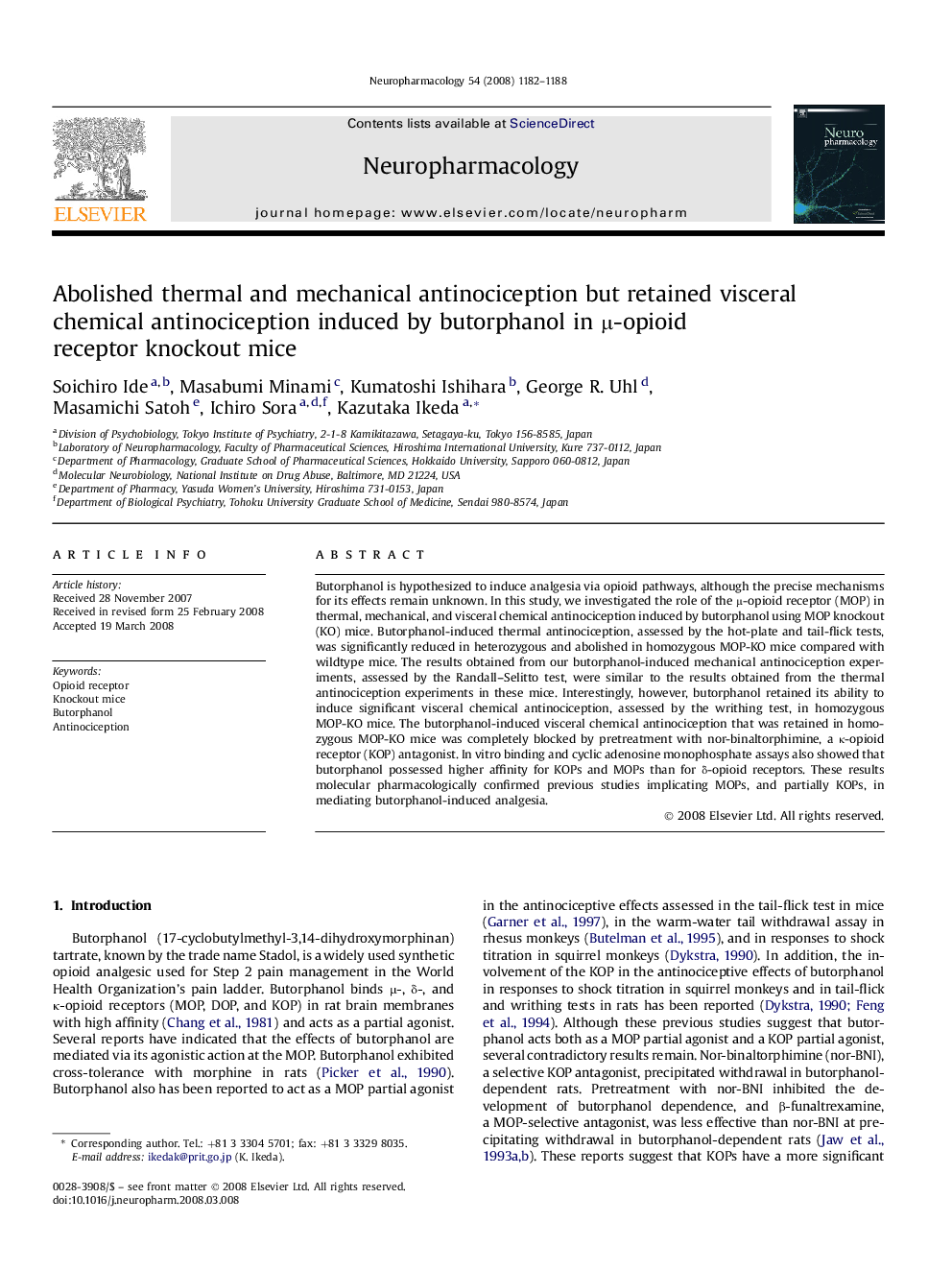| Article ID | Journal | Published Year | Pages | File Type |
|---|---|---|---|---|
| 2494844 | Neuropharmacology | 2008 | 7 Pages |
Butorphanol is hypothesized to induce analgesia via opioid pathways, although the precise mechanisms for its effects remain unknown. In this study, we investigated the role of the μ-opioid receptor (MOP) in thermal, mechanical, and visceral chemical antinociception induced by butorphanol using MOP knockout (KO) mice. Butorphanol-induced thermal antinociception, assessed by the hot-plate and tail-flick tests, was significantly reduced in heterozygous and abolished in homozygous MOP-KO mice compared with wildtype mice. The results obtained from our butorphanol-induced mechanical antinociception experiments, assessed by the Randall–Selitto test, were similar to the results obtained from the thermal antinociception experiments in these mice. Interestingly, however, butorphanol retained its ability to induce significant visceral chemical antinociception, assessed by the writhing test, in homozygous MOP-KO mice. The butorphanol-induced visceral chemical antinociception that was retained in homozygous MOP-KO mice was completely blocked by pretreatment with nor-binaltorphimine, a κ-opioid receptor (KOP) antagonist. In vitro binding and cyclic adenosine monophosphate assays also showed that butorphanol possessed higher affinity for KOPs and MOPs than for δ-opioid receptors. These results molecular pharmacologically confirmed previous studies implicating MOPs, and partially KOPs, in mediating butorphanol-induced analgesia.
